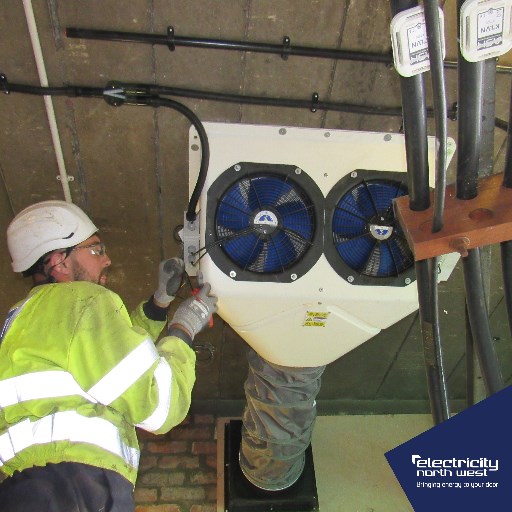The trial is all part of a £5.3 million pioneering project called Celsius, which is the first of its kind in Great Britain.
Techniques such as improved ventilation, heat extraction fans and alternative kinds of material for filling cable trenches, will cool down substations and help get more out of the substation equipment.
The new cooling techniques will be trialled over the next 12 months at sites across the region. The sites were chosen to be representative of the majority of substation types and locations across Great Britain and include 72 sites in Greater Manchester, 19 sites in Lancashire and nine sites in Cumbria.
At the same time Electricity North West will carry out a series of surveys to find out what customers living near the substations think of the new techniques.
Engineers have already installed temperature monitors at 520 substations. Data from the monitors is being used to understand how temperature affects the substation equipment and how cooling can help release more power onto the electricity network.
The company is also working with the National Physical Laboratory to analyse the heat and air flows in substations. This could influence the design of all substations in Great Britain in the future and potentially show how air flow in existing substations can be improved.
Steve Cox, engineering and technical director for Electricity North West, said: “Substations play a key role in the electricity network, linking up cables and changing voltage so that electricity is safe to use. Some of the substations in the trial operate at up to 11,000 volts which creates a lot of heat, even without the recent heatwave.
“By cooling them down in a co-ordinated way, we can make the electrical equipment in our substations more efficient and allow more power to flow through it. This means we can get more from the network we already have, release additional capacity and reduce long-term costs for customers.
“This project will help prepare the North West’s electricity network for a low carbon future and the increase of electric vehicles, solar panels and much more.”
The Celsius project runs until March 2020.
Find out more at www.enwl.co.uk/celsius.
Celsius project sites
In Cumbria there are nine Celsius sites: Whitehaven, Dalton-in-Furness, Grange-over-Sands, Kendal, Keswick, Windermere, Workington and two sites in Carlisle.
In Lancashire there are 19 Celsius sites: four in Chorley, seven in Preston, two in Morecambe, two in Blackburn and one each in Clitheroe, Darwen, Lancaster and Leyland.
In and around Greater Manchester there are 72 Celsius sites: 18 sites in Manchester, four in Ashton-under-Lyne, six in Bolton, four in Oldham, two in Rochdale, five in Sale, five in Salford, two in Stalybridge, six in Stockport, two in Tyldesley, eight in Wigan, and one in Alderley Edge, Altrincham, Atherton, Buxton, Cheadle, Glossop, Heywood, Newton-le-Willows, Warrington and Wilmslow.


